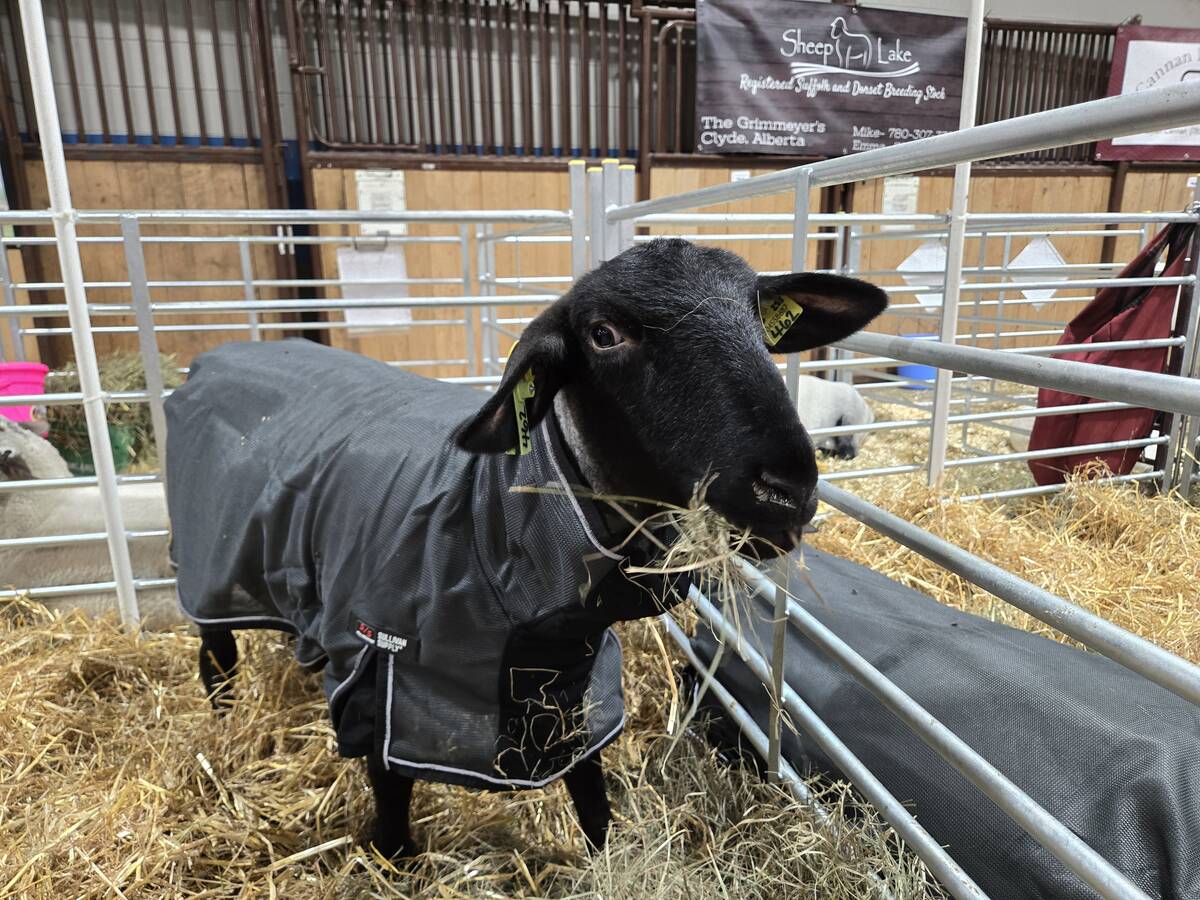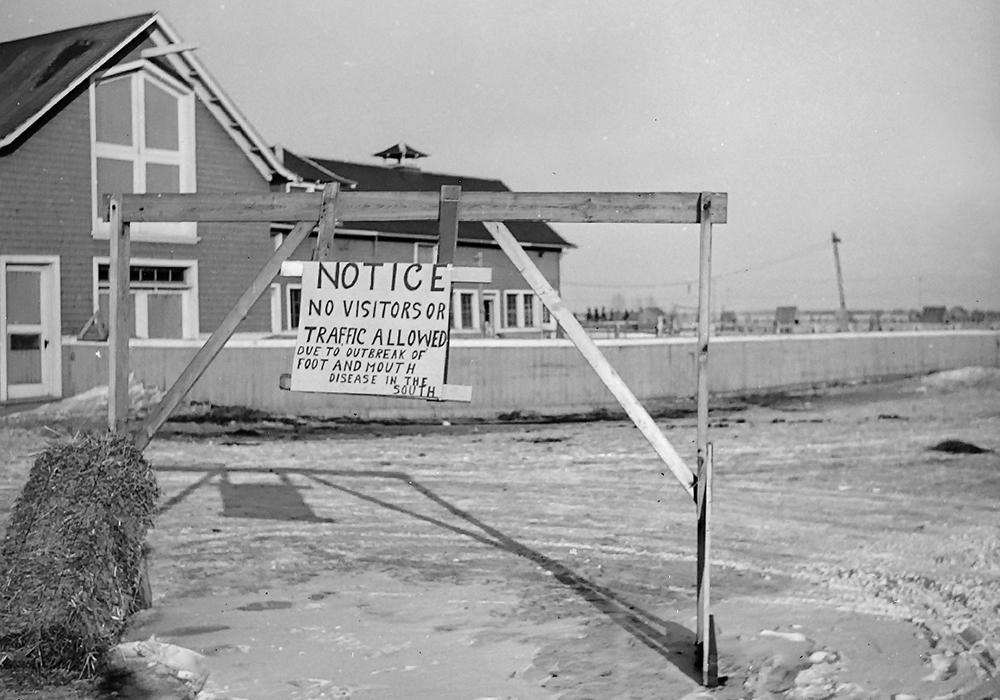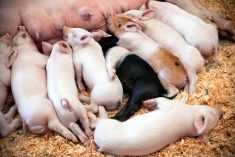The 1952 foot and mouth outbreak in Sask., started with one man from Germany in October, by February it was well-spread
In 1951, the world was recovering from the Second World War, financially and emotionally. People looked for new ways to get ahead.
Willi Bruntjen, a 29-year-old farm worker, left his homeland of Germany on Oct. 15 and came to Canada seeking a new life. He wore his only clothes, a brown suit, and carried a package of food for the trip, which included a link of sausage.
He obtained work in Saskatchewan at the farm of Leonard Waas outside of McLean on Nov. 2. Waas owned a small operation of 38 cows and a few pigs and horses.
Read Also

Sheep sector navigates changes in traceability
The sheep sector is developing advanced traceability systems and addressing ongoing challenges in accessing veterinary drugs and treatments.
Bruntien stayed just two days because he soon got work at a larger operation. Before leaving Waas’s farm, Bruntien found a dried piece of his sausage in his pocket and tossed it into the pig trough.
On Nov. 22, Waas sold some calves to a Regina packing plant. While visiting the plant, he walked through the feedlot as he often did before returning home.
By late November, Waas noticed an illness among his animals and understandably, talked to his neighbours about it. This meant he visited them or they came to his farm to look at his animals.
In the meantime, Bruntien moved to a large dairy farm, wearing the same suit and boots he wore when he left Germany. Other workers and farmers crossed paths with him as he went about his normal day.
By mid-January 1952, cattle on that dairy farm became sick. The owner phoned the veterinarian, who was in bed with a cold and made the diagnosis over the phone. He thought the sores were vesicular stomatitis, a mild condition treated topically.
Almost a month later, on Feb. 12, a vet examining the cattle wondered if the illness could be foot and mouth disease. FMD had never been in Canada so it was a long shot. He took samples for testing. On Feb. 25 the tests confirmed positive for FMD.
Foot-and-mouth disease is a severe, highly communicable viral disease of cloven-hoofed animals and poultry. The disease is characterized by fever and blister-like sores on the tongue and lips, in the mouth, on the teats and between the hoofs, loss of appetite and milk production. If affected animals recover, the disease leaves them weakened and debilitated. Horses are not affected.
Transmission can occur when infected animals have direct contact with susceptible animals. Sources of infection include nasal secretions, skin lesions, milk, urine, and feces.
Indirect transmission can also occur in the following conditions:
- When susceptible animals have contact with people wearing contaminated clothes, footwear or equipment
- When susceptible animals are held in facilities or are transported in vehicles contaminated with the virus
- When susceptible animals are given contaminated feed or water
- When susceptible animals are exposed to materials such as hay, semen or biological products that are contaminated.
Airborne transmission occurs when infected animals exhale large amounts of virus into the air. The virus can spread by air over long distances. Swine contribute more to airborne transmission because they excrete very large quantities of virus compared to other species.
The potential role that wildlife such as deer, elk and bison could play is largely unknown.
“The year Bruntjen came to Canada, foot-and-mouth disease was pandemic across Europe,” Frank Jacobs wrote in a Cattlemen magazine article.
It’s not known if the Bruntjen knew the disease was rampant in his home country but in any case, likely he didn’t understand how easily it was transmitted or by what means. He was simply one of thousands coming to Canada seeking a better life.
The RCMP appealed to the public to help them find Bruntjen and finally located him in Vancouver on Feb. 29. An astonished immigrant worker who spoke no English found himself the focus of pubic and scientific attention across Canada.
He was not arrested. The RCMP were asked to escort him to an agricultural lab in Hull, Que., for testing.
He co-operated and after several tests and numerous questions, he went his own way.
There is controversy that Bruntjen was made a scapegoat, but since he left an infected area in Europe and worked on the first Saskatchewan farm to show symptoms, he is the most likely source of the transmission although possibly not the only one.
To prevent the spread of FMD, the Canadian government put all 11 municipalities around Regina in which infected animals were found under quarantine, adding an 80-kilometre buffer zone.
Within the quarantined area, 22 farms were affected. All livestock as well as poultry on those farms were destroyed, along with feed. Cattle were herded into deep pits, shot by RCMP officers, and the carcasses covered with unslaked lime before burial.
All equipment and buildings had to be disinfected. Test calves were then placed on the farms to see if they became sick.
Farmers were reimbursed for animals and feed that had to be destroyed. Extra veterinarians were employed for testing and supervising the disinfection process.
RCMP patrolled the roads leading into infected areas to keep unauthorized people out such as the press and the curious. The government asked for the public’s co-operation in reporting new infections. The cost of reimbursing the farmers, developing programs and controlling the spread is estimated at $2 million.
The disease was isolated to a specific area, but the entire country took precautions. All provinces restricted interprovincial movement of animals and meat. When the British Columbia government blocked beef from Alberta, farmers from that province, drastically lowered prices.
The United States restricted imports of all live cattle and fresh beef from Canada, which sparked great concerns about prices. The United Kingdom imposed a restriction on Canadian bacon. Canada then imposed rigid import controls on foreign suppliers to retain domestic meat for the Canadian market.
The disease was brought under control by May 3, but the 42 farms that had been in contact with the virus remained under quarantine until mid-August. Canada was declared disease-free by mid-August 1952.
In all, 42 properties had been in contact with the virus and 29 were infected. To stop the spread, 1,313 cattle, 294 pigs, 97 sheep, 2,372 fowl, and 15,828 eggs were destroyed.
FMD is a “reportable disease” under the Health of Animals Act. This means that all suspected cases must be immediately reported to the Canadian Food Inspection Agency.
The CFIA does not permit imports of susceptible animals and animal products from countries that are not recognized by Canada as being “free of FMD,” unless the products have been processed in a manner that destroys the virus.
Travellers entering Canada from are required to declare all animals and animal products. They must also report if they have been on a farm or exposed to animals while in another country, or if they will be visiting a farm while in Canada.
In the event of an FMD outbreak, the CFIA’s strategy would be to eradicate the disease and re-establish Canada’s disease-free status as quickly as possible.
To eradicate FMD, the CFIA would use its “stamping out” policy, which includes:
- humane destruction of all infected and exposed animals
- tracing to identify locations of potentially infected or exposed animals
- surveillance to detect newly infected animals
- quarantine and animal movement controls to prevent spread
- possible use of focused emergency FMD vaccine, as part of a quarantine and eradication program
- decontamination of infected premises
- zoning to define infected and disease-free areas
Travellers to and from positive countries should dry clean or wash their clothing with bleach. Footwear should be left behind if you know you’ve been in a country that’s positive. At the least, shoes should be cleaned with bleach.
Travellers should report to the Canada Border Services Agency if they have been or will be going to a farm. Avoiding contact with livestock for five days is also important.
The vaccine’s use would be targeted toward animals near an outbreak to control, contain and eliminate the disease. The vaccine is expensive because foot-and-mouth disease has many different strains and there’s a different vaccine for each strain.
In 2001, a FMD outbreak in Britain caused a massive agricultural crisis. A routine inspection at Cheale Meats abattoir in Essex found signs of foot-and-mouth disease in 27 pigs. Samples are sent away for analysis. It was believed the virus had already spread to 57 farms nationwide in the days before the discovery.
With export bans in place, more animals entered the domestic market than usual. Undetected, some of them carried foot-and-mouth disease. The first mass slaughter, involving thousands of pigs and cattle, got under way in farms across England. Faced with overwhelming numbers of animals awaiting slaughter, the government called in the army to help organize the cull. The epidemic reached the six-month mark with 3,750,222 animals slaughtered. After 11 months, Britain was declared disease free on Jan. 14, 2002.
Canada has remained FMD-free since the 1952 outbreak. It was last reported in in the United States in 1929 and in Mexico in 1954. The Canadian Food Inspection Agency website at Canada.ca has a list of all FMD-free countries.
Human cases of FMD are extremely rare, mild and most often associated with having direct contact with FMD blisters.















